What's New
Displaying results 2841 - 2850 of 4052
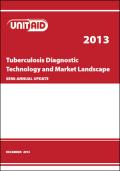
Resource | Publications,
This document is a semi-annual update to the second edition report. The purpose of this document is to highlight developments that have occurred since July 2013 – namely, in the areas of policy development, implementation and scale-up of the Xpert® MTB/RIF assay and efforts to define the characteristics of next-generation molecular tests that could replace smear microscopy. An updated technology pipeline is included for reference; however, a detailed report on newer technologies, including technologies other than nucleic acid amplification tests (NAATs), will be published in 2014 (third edition).
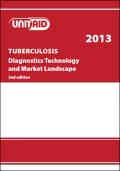
Resource | Publications,
The technology landscape highlights current and emerging tools for improved diagnosis of TB. The emphasis of this report is on Nucleic acid amplification test (NAAT) products, where the most significant recent development has been seen. A variety of options, either commercially available or in late-stage development, are designed for detection of TB, first and/or second-line drug resistance, or for TB diagnosis and drug resistance combined. Commercialized technologies and those in late-stage development do hold promise in expanding the potential for TB diagnosis via NAATs. However, GeneXpert remains the leading technology in this area and is the last product endorsed by WHO in 2010. While a growing portfolio of TB NAAT assays are commercialized or in late-stage development, none is expected to be endorsed by WHO in 2013, and few tests are anticipated to have the necessary evidence base for endorsement over the next two to three years.
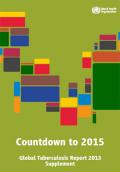
Resource | Publications,
At the turn of the 21st century, the United Nations (UN) established 8 Millennium Development Goals (MDGs), with targets set for 2015. Designed to drive progress worldwide and endorsed by all countries, the targets have been the focus of international and national development efforts for more than a decade.
This special supplement of the Global Tuberculosis Report 2013 summarizes the status of progress towards targets set within the MDG framework and for the response to TB/HIV and multidrug-resistant TB (MDR-TB) specifically, and the actions needed to either move beyond or accelerate towards these targets. Snapshots are provided globally, regionally and for the 22 high-burden countries (HBCs) that have about 80% of the world’s TB cases and that have received the greatest attention at the global level since 2000.
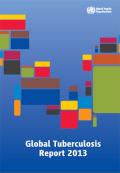
Resource | Publications,
Nearly 20 years after the WHO declaration of TB as a global public health emergency, major progress has been made towards 2015 global targets set within the context of the Millennium Development Goals (MDGs). Two years ahead of the deadline, the Global Tuberculosis Report 2013 and accompanying supplement Countdown to 2015 assess progress towards the 2015 targets and the top priority actions needed to achieve and/or move beyond them.
This is the eighteenth global report on tuberculosis (TB) published by WHO in a series that started in 1997. It provides a comprehensive and up-to-date assessment of the TB epidemic and progress in implementing and financing TB prevention, care and control at global, regional and country levels using data reported by 197 countries and territories that account for over 99% of the world’s TB cases.
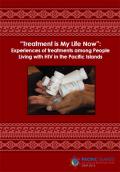
Resource | Publications,
This report summarises the results of qualitative research that was conducted to better understand reasons for initiating, continuing and ceasing treatment among PLHIV in the Pacific Islands. In total, 49 PLHIV were inter-viewed, including 23 HIV-positive people in Fiji, 11 HIV-positive people in Guam, 2 HIV-positive people in Kiribati, 5 HIV-positive people in Samoa and 8 HIV-positive people in Solomon Islands. A training workshop was held in November 2011 where the team of 10 PLHIV peer researchers, 2 training support facilitators and the team leader worked in collaboration to develop the method for the study. In-depth interviews were selected as the research method to gain a detailed understanding of the participants’ treatment experiences. Research participants were recruited through PLHIV support networks where they exist and through health clinics that provide treatment to PLHIV.
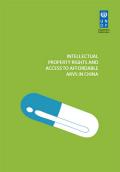
Resource | Publications,
This paper documents the recent developments, opportunities and challenges in intellectual property rights and access to affordable medicines in China. In particular, the paper finds that there have been impressive achievements in the national response to the HIV epidemic in China. Examples include the rapid expansion of government-supported antiretroviral (ARV) schemes and the development of a legal framework on intellectual property to address access to affordable pharmaceutical products in China.
Adoption of the National Intellectual Property Strategy by the State Council in June 2008, and the revisions to the Patent Law and the Implementing Regulations with strong focus on public health protection are among the most prominent legal and policy achievements over the recent years, founding an enabling environment for action.
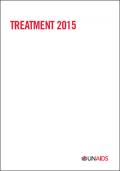
Resource | Publications,
The Treatment 2015 framework leverages existing international and national guidelines to generate new ways of thinking about HIV testing and treatment. Rather than expecting people to adapt themselves to complicated service systems, Treatment 2015 calls for systems to be adapted to the needs and circumstances of the people who use them. Community-led initiatives are vital to expanding and sustaining access to life-saving treatment services.
As the evidence base continues to evolve and new challenges and opportunities emerge, new mechanisms for translating evidence into action will be needed. Efforts to scale up treatment will need to respond more swiftly to information on epidemiological trends and service coverage using a data-driven strategic approach that focuses programming on the populations and settings in which HIV is spreading most rapidly and the unmet need for HIV treatment is most acute.
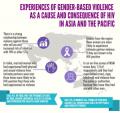
Resource | Infographics,
Data on key populations from 2008 to 2013 show how gender-based violence works as a cause and consequence of HIV in the Asia and the Pacific.
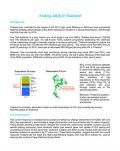
Resource | Publications,
Thailand has committed to the targets of the 2011 High Level Meeting on AIDS and has a prioritized National Strategy which pledges a two-thirds reduction in incidence in sexual transmission, and through injecting drug use, by 2016.
Thailand has the potential to be one of the first countries in Asia to ‘End AIDS’ and reach the first milestone on the road to end AIDS by meeting the 2015 HLM targets. The end of AIDS can become a reality if Thailand is able to effectively utilize the preventive effects of antiretroviral treatment. Thailand as has already shown this is possible through the virtual elimination of HIV infections from mother to child.
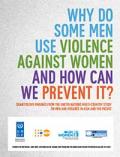
Resource | Publications,
Violence against women constrains the enjoyment of women's human rights everywhere. We know that it is a manifestation of power and control and a tool to maintain gender inequalities, disrupting the health, survival, safety and freedom of women and their families around the world. We know that to end violence against women and girls, we must ensure their full empowerment, promote and protect their rights, including access to justice and support services, and end the discrimination they face in all aspects of their lives.
Preventing violence requires the sustained involvement of socializing institutions at the community and state levels, including schools, faith-based organizations, media and popular culture. This is recognized in the Declaration on the Elimination of Violence against Women, which calls for States to modify the social and cultural patterns of conduct of men and women and to eliminate prejudices and customary practices.





